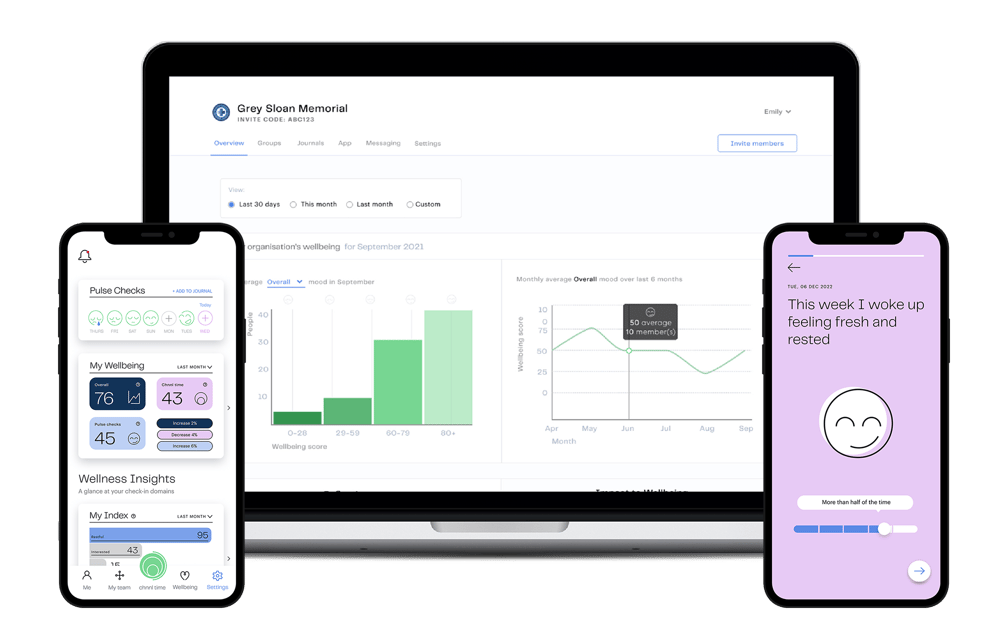Measuring Employee Wellbeing
"How do we measure employee wellbeing?"
The reality is that in the modern business world, it often comes back to money. But because employee wellbeing is closely linked to emotions and people health is at stake, we aim to encourage companies to find a balance between linking their workforce productivity and the more ethical reasons for investing in an employee wellbeing strategy and its accompanying resources.
A flourishing workplace relies on thriving employees. If employees are facing challenges, negative emotions, or burnout, it can have a negative impact on the organisation.
To understand and quantify wellbeing, our product is built to measure using the globally recognised wellbeing measurements, including the ISO45003, WHO-5 systems, and indigenous models such as the Māori health model Meihana.
Making Employee Wellbeing Reporting Simple
We've also created a simple framework for measuring the progress of your employee wellbeing strategy to make reporting accurate and the conversations your company is having about employee wellbeing more organised.
We also recommend tracking the team sick days as a way to link your employee wellbeing efforts to the company bottom line.
1. Positive Action | Wellbeing Resource Engagement
chnnl provides the ability for you to easily see the uptake on the wellbeing resources you're offering, so you can measure the ROI on the investment you're making on them based on participation.
From counselling to nutrition, to financial advice, employee participation is a key indicator of employee wellbeing, as it shows the effort your team is putting into their own wellbeing.
2. Environment | Workplace Psychosocial Risks
The clinically validated chnnl Listen features enable you to track the psychosocial risks that are present in your employees work experience. This helps leadership teams act on pressing environmental factors impacting employee wellbeing, and give an overview of the workplace culture.
Psychosocial risks include events link bullying, working overtime, or lack of access to learning. We also provide measurements on how each of these factors or events are impacting the overall psychological wellbeing score. All data collected is 100% anonymous.
3. Team Health | Psychological Wellbeing Score
Also through the chnnl Listen features, we present an ongoing team psychological wellbeing score. This score can help to monitor burnout levels and understand the key psychosocial risks impacting the score.
When it comes to the psychological wellbeing score, we don't recommend making it the main indicator of employee wellbeing strategy success. Life is full of good days and bad, times to thrive and hard times, and providing space for your employees to express themselves truthfully is the most supportive thing workplace can do.

.svg)





.svg)